NOTE: For individuals having Wikipedia entries, their names are presented as links to the associated Wikipedia entries.
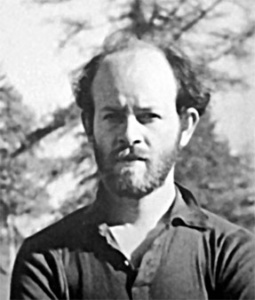 | Harold Zimmerman (1905–1941) Harold Zimmerman was in his early 20s and an art student at Boston’s Museum school when he first met Hyman. He taught at both the West End Community Center and the Roxbury Settlement House. Zimmerman met Jack Levine at the Roxbury facility and Hyman at the West End location. Zimmerman’s teaching method was a perfect fit for Bloom, focusing on drawing from “visual imagination”, using memory and intuition. Bloom would refer to Zimmerman as his “spiritual father”. |
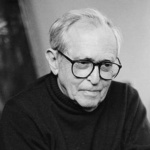 | Jack Levine (1915-2010) Jack Levine was born in Boston, the youngest of 8 children. His family had emigrated from Lithuania in 1898. Growing up in Boston’s tenement neighborhoods, Jack had many of the same childhood experiences as Hyman. He also shared a remarkable artistic talent. Through Zimmerman, Jack and Hyman met in 1927 (age 12 and 14 respectively). Jack moved to New York City in 1946. He was the subject of a 1989 film documentary entitled Jack Levine: Feast of Pure Reason. |
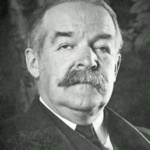 | Denman Ross (1853-1935) Through Jack Levine and Harold Zimmerman, Denman Ross became aware of Bloom in 1928. Ross was a Professor of Design at Harvard. A painter, a collector or oriental art and a trustee at the Boston MFA, Ross had previously published work on color theory, and was interested in applying those ideas to young students of exceptional talent. Levine and Bloom fit the bill perfectly. In addition to providing instruction (along with Zimmerman), Ross provided each boy with studio space and a stipend, so they could focus on their art exclusively and avoid the parental pressures of seeking non-art employment. Ross's support ended in 1933. |
 | Betty Chase ( 1903 –1941) Bloom met Elizabeth Chase in 1930 as a fellow pupil at Harold Zimmerman’s Dartmouth St. studio. She was 10 years older than Bloom, well educated and well traveled. A skilled classical violinist with a keen interest in drawing, she had a deep interest in metaphysical literature and shared her library, as well as her enthusiasm for the subject matter, with Hyman. When the stipend from Denman Ross ended in 1933, Betty, Jack and Hyman found studio space on Kirkland St, with Betty covering the rent. In addition to being studio space for all three, it became Bloom’s living quarters. Hyman was 20, Jack was18. Betty remained a close friend of Bloom’s until her death in 1941. |
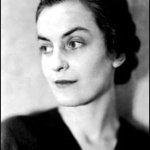 | Dorothy Miller (1904-2003) Bloom's first public showing came about when he was selected to participate in the Museum of Modern Art's Americans 1942 -- 18 Artists from 9 States exhibition. Dorothy Miller, a curator at MOMA, had been made aware of Bloom through his involvement in the Boston WPA program. Works included in the exhibition were Christmas Tree (1939), Chandelier I & II (1940), The Synagogue (1940), and The Bride (1941). MOMA purchased Christmas Tree and The Bride, and later acquired The Synagogue. It is at this exhibition that Jackson Pollock and Willem de Kooning first came across Bloom's work, and would later refer to Bloom as the first Abstract Expressionist in America. |
 | Hermon di Giovanno (1900-1968) Bloom met di Giovanno in the early 1940s. They were part of a circle of friends, including Alan Hovhaness, who would regularly get together to discuss a shared interest in music and mysticism. Bloom encouraged di Giovanno's interest in art, supplying him with materials. |
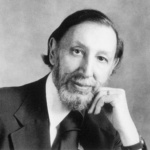 | Alan Hohvaness (1911-2000) Hovhaness was one of America's most prolific composers, with a catalog of over 500 works. He was born in Somerville, MA. Hovhaness became interested in the music of India in the mid 1930s. He was introduced to Bloom and di Giovanno in the early 1940s, and they met frequently to discuss spiritual and musical matters. All three had a strong interest in Indian classical music, and brought many well known Indian musicians to Boston to perform. During this period, Hovhaness learned to play the sitar, studying with amateur Indian musicians living in the Boston area. Around 1942, Bloom introduced Hovhaness to Yenovk Der Hagopian, a singer of Armenian and Kurdish troubadour songs, whose singing inspired Hovhaness. In 1948 he joined the faculty of the Boston Conservatory, teaching there until 1951. His students there included jazz musicians Sam Rivers and Gigi Gryce. In 1951 Hovhaness moved from Boston to New York City. |
 | Kirk Askew (1903-1974) R. Kirk Askew joined the Durlacher Brothers in the late 1920s to manage the newly established New York City branch. When George Durlacher, the oldest surviving partner of the company, retired in 1937, Askew took over ownership of the gallery. He continued to run the business until late 1968. Askew was educated in art history at Harvard and represented a new generation of scholarly dealers. When he first joined the company, Askew was involved in the sale of important Old Master drawings and paintings. After World War II, the gallery increasingly exhibited and handled the work of modern and contemporary artists. Bloom signed on with Durlacher Bros. in 1946. Durlacher would continue to be his NY dealer until they closed their doors in late 1968, and Bloom then moved to representation with Terry Dintenfass. |
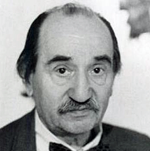 | Boris Mirski (1898-1974) Boris Mirski owned The Mirski Gallery on Newbury St. in Boston. In 1948 - although not yet representing Bloom - Mirski organized a major exhibition for Bloom. He borrowed work from the Museum of Modern Art, Harvard and Durlacher Gallery in NY. He also assisted Bloom with his successful application for a Guggenheim Foundation Fellowship, awarded for the year 1949. The Mirski Gallery closed upon Mirski's death in 1974. In a Smithsonian Art Archive transcript, artist and architect Ralph Coburn recounts "...I said Hyman Swetzoff was exotic. Mirski was even more so. Mirski was a very interesting person. He was short, rotund, balding, immensely powerful, strong. He was physically strong. He could lift all kinds of stuff. He was ambitious. He was immensely charming. He was a scoundrel. I loved working for him." |
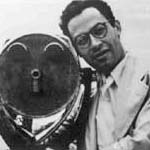 | Hyman Swetzoff (1920-1968) Hyman Swetzoff worked at the Mirski Gallery until 1948, when he and his brother Seymour opened their own print and drawing gallery on Huntington Avenue. They moved the gallery to Newbury Street in 1953. Swetzhoff was a very strong supporter of Bloom's work. Bloom would trade his own drawings with Swetzoff for prints by Redon and Bresdin. It was through Swetzoff that Bloom met collector Jerry Goldberg, who became an extremely enthusiastic supporter of Bloom's work. The gallery closed upon his murder in 1968. In 1998, Martha Swetzoff, Hyman's daughter, released a documentary entitled Theme: Murder that chronicles her father's life and tragic death. View the film trailer on YouTube. |
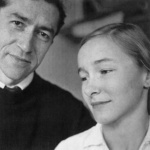 | Nina Bohlen (1931- ) Nina Bohlen met Bloom when he was teaching at Harvard. He had starting teaching at Wellesely in 1949, and moved to a position at Harvard in 1951. Nina was an aspiring artist attending Radcliffe when she signed up for a class Bloom was teaching. Nina graduated in 1953 and they married in 1954. Even though they separated in 1957 (divorced in 1961), Hyman and Nina would remain very close. Hyman would continue to travel to Nina's house in Lubec, Maine over the course of many summers. Nina continues to spend summers working at her studio in Lubec. Her most recent solo exhibition was Nina Bohlen: My Woods at the Danforth Museum, March 4 – May 20, 2012. |
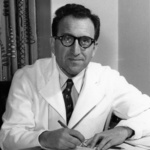 | Dr. A. Stone Freedberg (1908-2009) Dr Freedberg was Bloom's longtime friend and patron, as well as his personal physician. Dr Freedberg was on the staff at Harvard Medical School. He was recognized for developing early treatments for angina and did pioneering work in investigating the causes of stomach ulcers. Bloom was plagued with ulcers his entire life, and presumably Dr Freedberg and Bloom first met when Bloom was seeking treatment for his ulcers. They met circa 1955. View information about Dr Freedberg’s extremely interesting career on the Harvard Medical School website. The Bloom documentary is dedicated to the memory of Dr. Freedberg. |
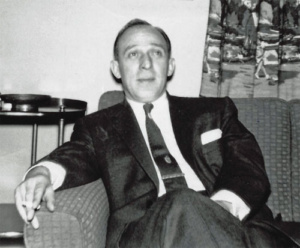 | Jerry Goldberg (1912-1965) Jerry Goldberg was a businessman from Boston who started visting the Swetzhoff Gallery in 1954. He was drawn to Bloom's work and arranged to meet the artist. The two immediately struck up a friendship and would regularly meet for lunch on Saturdays. Goldberg became an ardent supporter of Bloom and his patronage came to include a monthly stipend payment in exchange for drawings. Goldberg created an impressive collection of both Bloom's work and other Boston based artists. Dorothy Thompon's book states "His daughter, Judith, described the relationship as one in which he felt in some awe of Bloom, and believed, as did others who are scattered through Blooms life, that it was his special privilege to support his creativity." Goldberg died at age 53 in 1965 from cancer. |
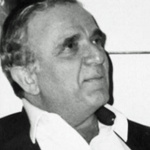 | James Rubin (1927-1991) Excerpted from the Harvard University Library Archives: “James Rubin was an enthusiastic collector and promoter of Indian music even though he had no formal training. He was the founder and executive director of the Pan Orient Arts Foundation, an organization that helped organize concerts by Indian artists in the United States. The earliest recording in his collection is a performance by sitarist Ravi Shankar made at Rubin’s Newtonville, MA home in March 1957; his last recording was made in Madras in December 1987. In the interval he traveled to India twenty times to attend the annual music festival in Madras and make recordings. He is still fondly remembered by musicians in Madras as ‘Rubin Mama’ (Uncle Rubin) for wearing Indian dress, his love of music, and his avuncular manner. He was a close associate of the famous singer M.S. Subbulakshmi and recorded many of her concerts. He arranged her nationwide tour of the United States that culminated in her famous performance at the United Nations.” |
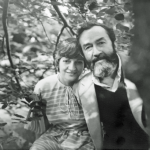 | Stella Caralis Hyman Bloom and Stella Caralis were married on July 20th, 1978 (her birthday). They had initially met back in the mid 1950s through mutual friend Jerry Goldberg. Goldberg was a friend and ardent supporter of Bloom's work. Stella had left Boston for about 10 years and when she returned she and Bloom renewed their friendship, which in turn led to their marriage. They left Boston in 1983, settling in to a house in Nashua, NH. Stella hosted birthday parties for Bloom's 70th, 80th and 90th birthdays, where large numbers of Bloom's friends from Boston made the short trek up Route 3 to NH and celebrated Hyman's milestone birthdays. |
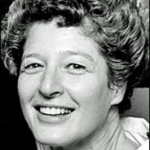 | Terry Dintenfass (1920-2004) Bloom's New York dealer, Durlacher Bros, closes in 1968 after providing 20 years of representation for Bloom. The Terry Dintenfass Gallery, begins representing Bloom exclusively. Dintenfass presents NY solo shows for Bloom in 1971, 1972, 1975 and 1983. |
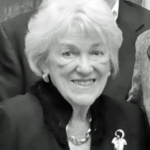 | Dorothy Abbot Thompson (1918-2012) Dorothy Abbott Thompson laid the foundation for art historical writing on Hyman Bloom. She wrote the essential biography of Bloom. Originally from Minnesota, Thompson settled in the Boston area after WWII when her husband took a position as professor of Business Administration at Harvard. |
